Advice
A Great RSPB Youth Group
How to set up an RSPB youth group for your local area.
Here are our top seven things to see and do in nature in February.
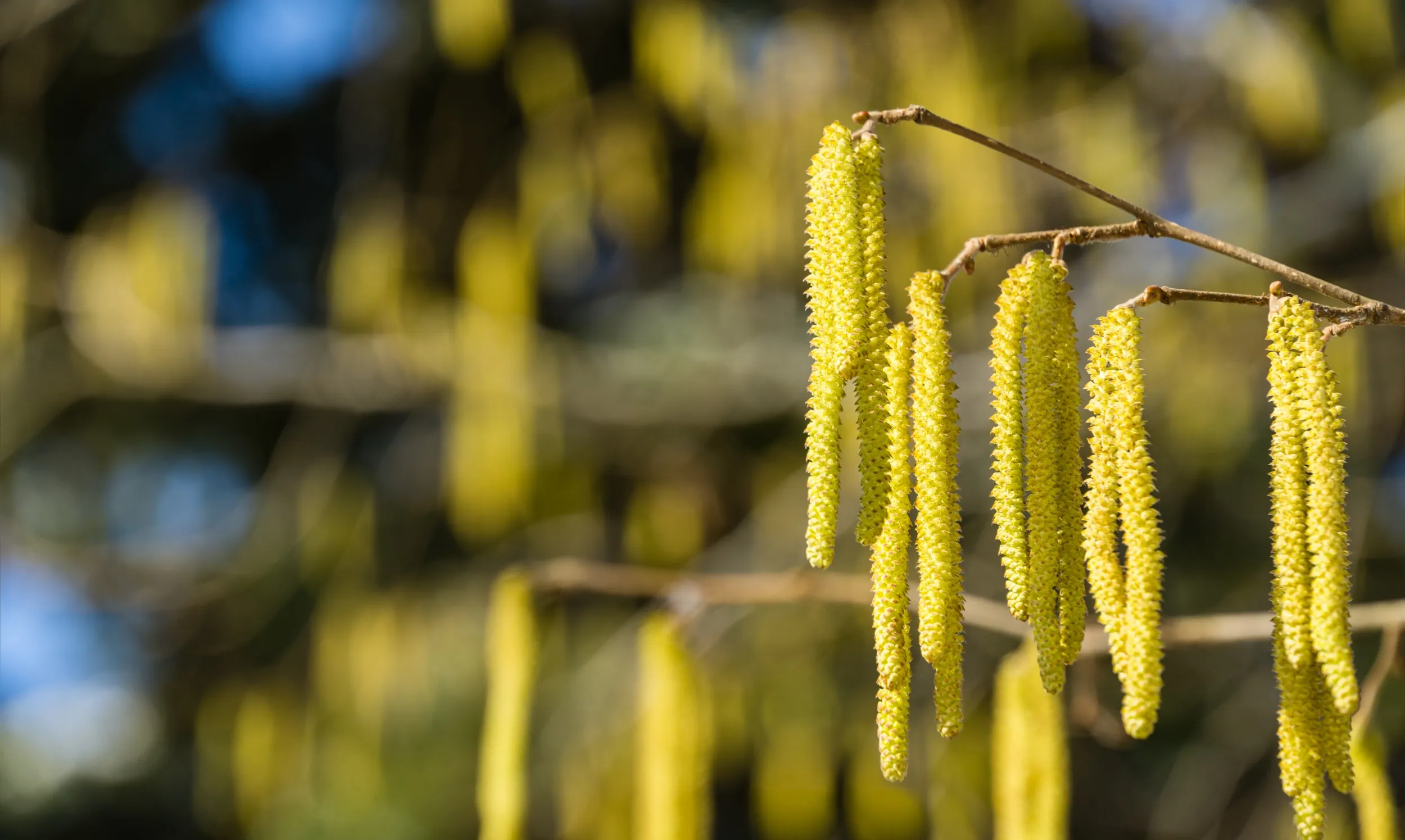
This month is all about change. As the weather warms, the days grow longer, new shoots appear, and many birds are pairing up in readiness to nest.
With their long bills and hulking grey bodies, Grey Herons are unmistakeable and commonly seen along rivers, lakes and even garden ponds. Usually seen alone, this all changes from February, when the birds head to communal nesting sites, known as heronries. Here they will lay their eggs, with chicks hatching in March and April. In 2022, the largest heronry recorded by the British Trust for Ornithology contained 110 nests. Head out to your local waterway and see what you can find.
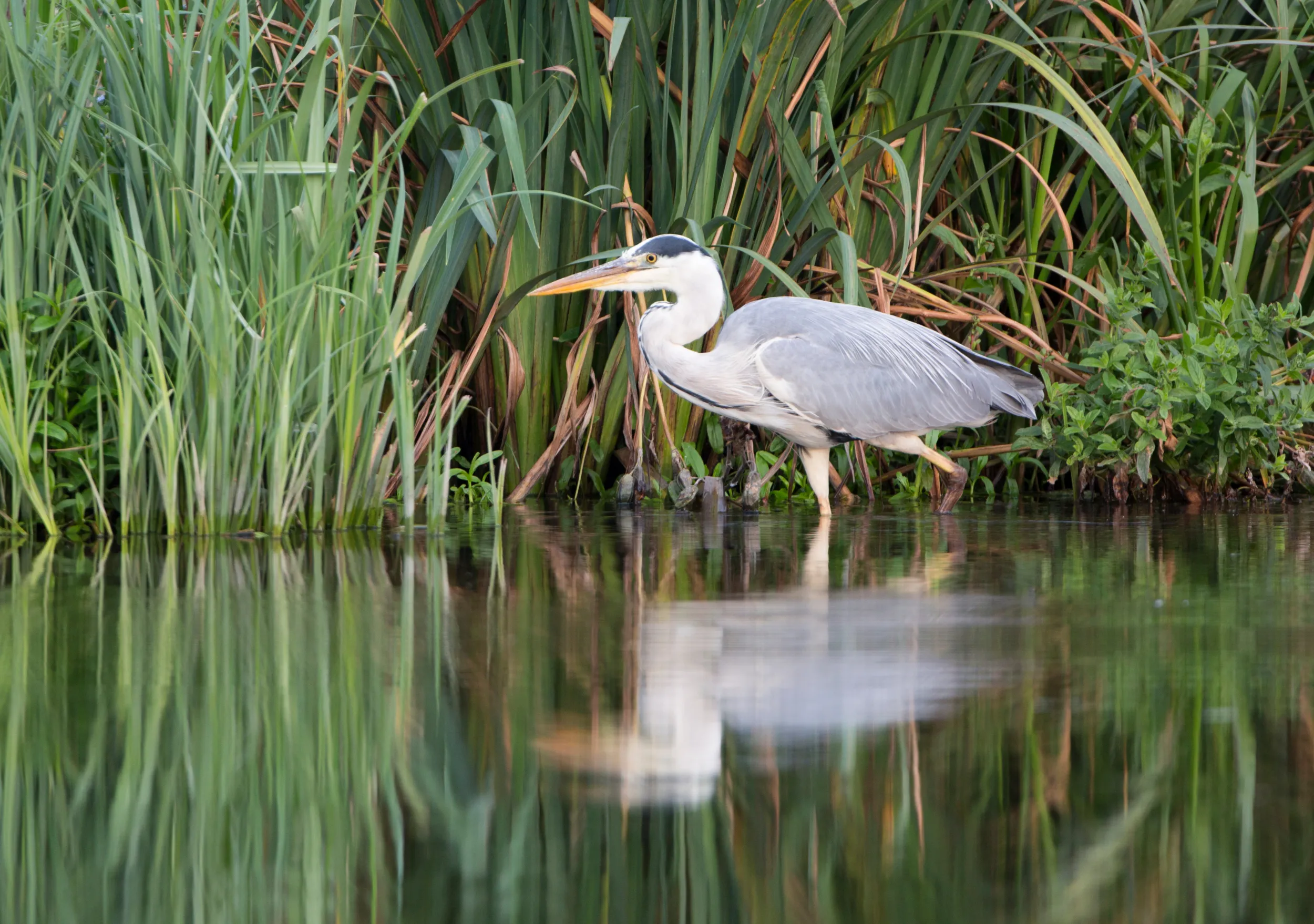
RSPB Middleton Lakes is home to one of the largest heronries in Warwickshire, and can be viewed from the Heronry Boardwalk, just 50m from the car park. As well as Grey Herons, there’s a roost of 50 to 100 Little Egrets, plus Great White Egrets and Cattle Egrets.
RSPB Fairburn Ings. Discover the heronry at this Yorkshire nature reserve at a Specialised Heronry Experience. RSPB experts will show you the nesting sites of Grey Herons and Cormorants, and introduce you to these fascinating species. Book your place.
RSPB Pagham Habour. Visit this Sussex nature reserve to see an active heronry, with Grey Herons, Little Egrets and Cattle Egrets.
RSPB Burton Mere Wetlands. There is a heronry with Grey Herons, Little Egrets and Great White Egrets in woodland close to this nature reserve in Cheshire. Viewing is possible from trail and hide in Burton Mere, with the birds flying in and out of the wetland habitat within the nature reserve.
RSPB Swell Wood in Somerset has the largest heronry in South West England with up to 150 pairs of Grey Herons nesting there and a few pairs of Little Egrets too.
Nuthatches are dainty woodland birds with blue-grey backs, orange bellies and a bandit-like swoosh of black across their eyes. Like Jays and squirrels, these birds cache food, hiding acorns and other nuts away in autumn to eat in subsequent months. At this time of year, you might see one hammering away on a tree. To eat their haul, the birds wedge the nut in the bark of the tree, repeatedly striking it with their sharp beaks to get at the tasty flesh inside.
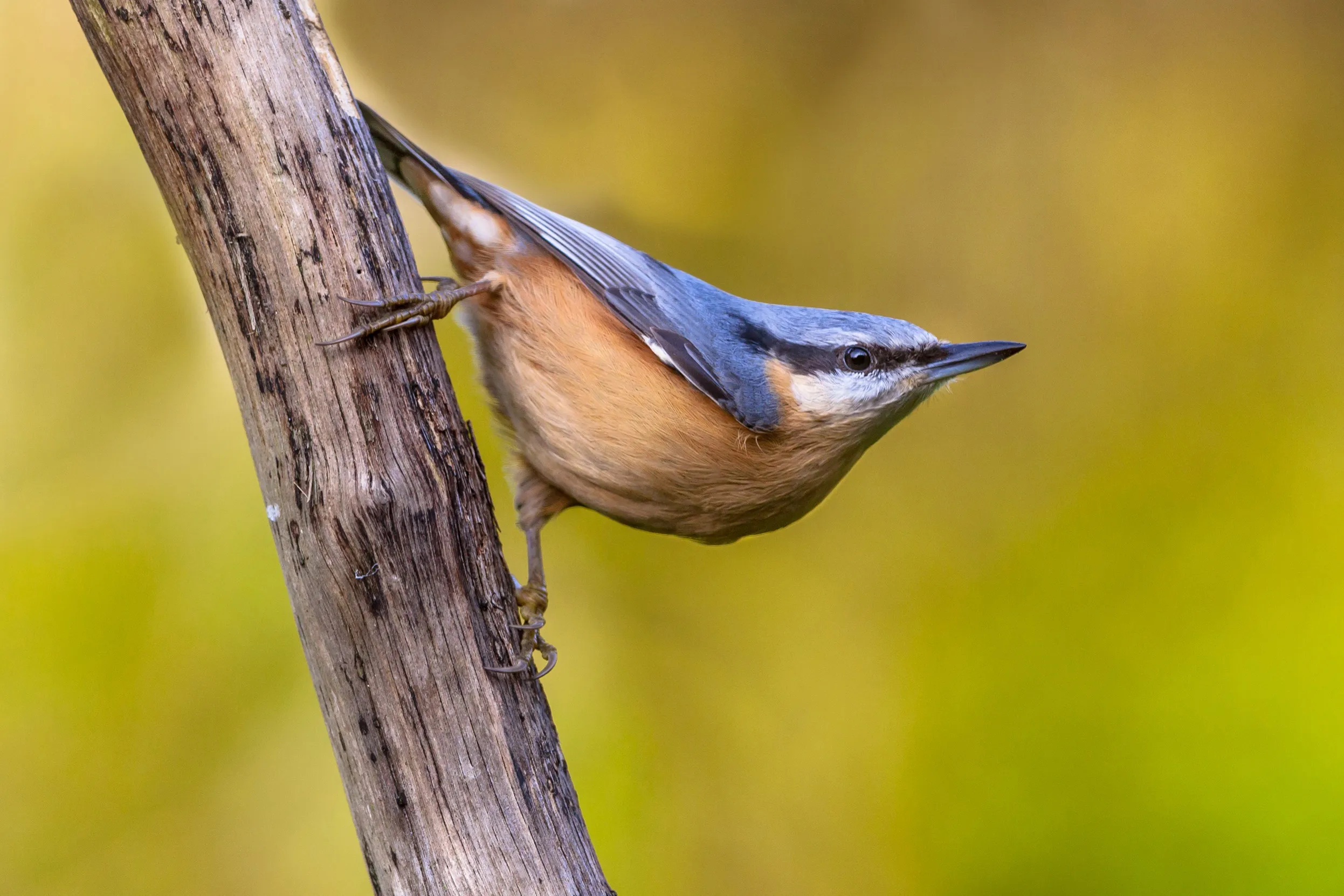
Keep feeding the birds and you never know what might turn up at the feeder. Two special guests you might see are Siskins and Redpolls. Siskins are yellow-feathered finches typically found in pine forests. During winter, however, they are joined by migrant birds from colder parts of Europe, and as natural food resources become scarcer, they’ll happily visit garden feeders. Another finch to look out for is the Lesser Redpoll. Mainly restricted to eastern parts of England and Scotland, these winter migrants are sometimes seen on bird feeders.
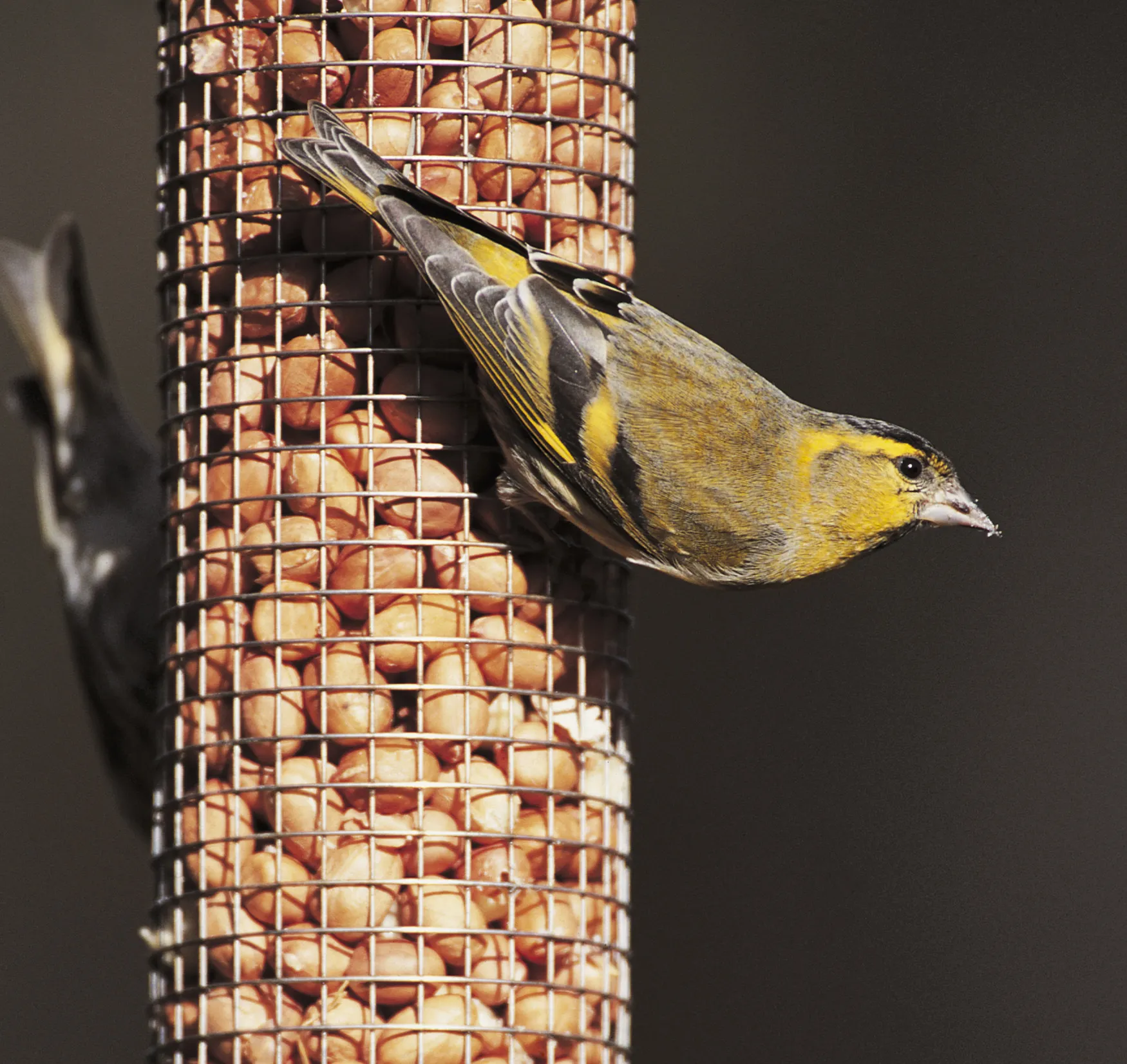
Show your love for birds by putting up a nest box. Running from 14 February every year, National Nest Box Week is a timely reminder that one of the easiest ways to help birds is by putting up a nest box. Although Swifts aren’t due back until late April, these are birds badly in need of a helping hand. Between 1995 and 2021, numbers plummeted by 62% in the UK, with a lack of suitable nest sites a contributing factor. Different birds favour different types of nest boxes. You’ll find all you need to know in our ultimate guide to nest boxes.

With many of our trees still leafless, our parks, woods and hedgerows can feel pretty bare. But take a closer look. Right now, some of our trees are in fact flowering. Catkins are long, slim flowers that hang from our trees, bearing pollen and enabling the trees to reproduce. Flowering prior to there being leaves on the trees makes for an easier dispersal of pollen. Look for Hazel catkins, with their fuzzy, yellow lambs’ tails. These are the male flowers. Take a closer look and see if you can spot the female flower on the same branch, a tiny bud with bright red wisps.

Watch out for bumblebees tempted out of hibernation on a sunny day and take a moment to enjoy the warmth of the sun on your face, while listening out for the bee’s signature buzz. With the temperatures rising and the days getting longer, large queen bees take advantage of nectar from early flowers such as crocuses. They also start looking for somewhere to start a hive to raise the next generation. Not all bees live communally though, and you can give solitary bees a helping hand by giving them a place to live.

Mark this month with a visit to an RSPB nature reserve. There’s more than 170 for you to visit across the UK, with RSPB members enjoying free entry and parking. From wild escapes to family-friendly trails, there’s something for everyone. Choose your own adventure or be inspired by our selection of some of the top reserves to visit right now.
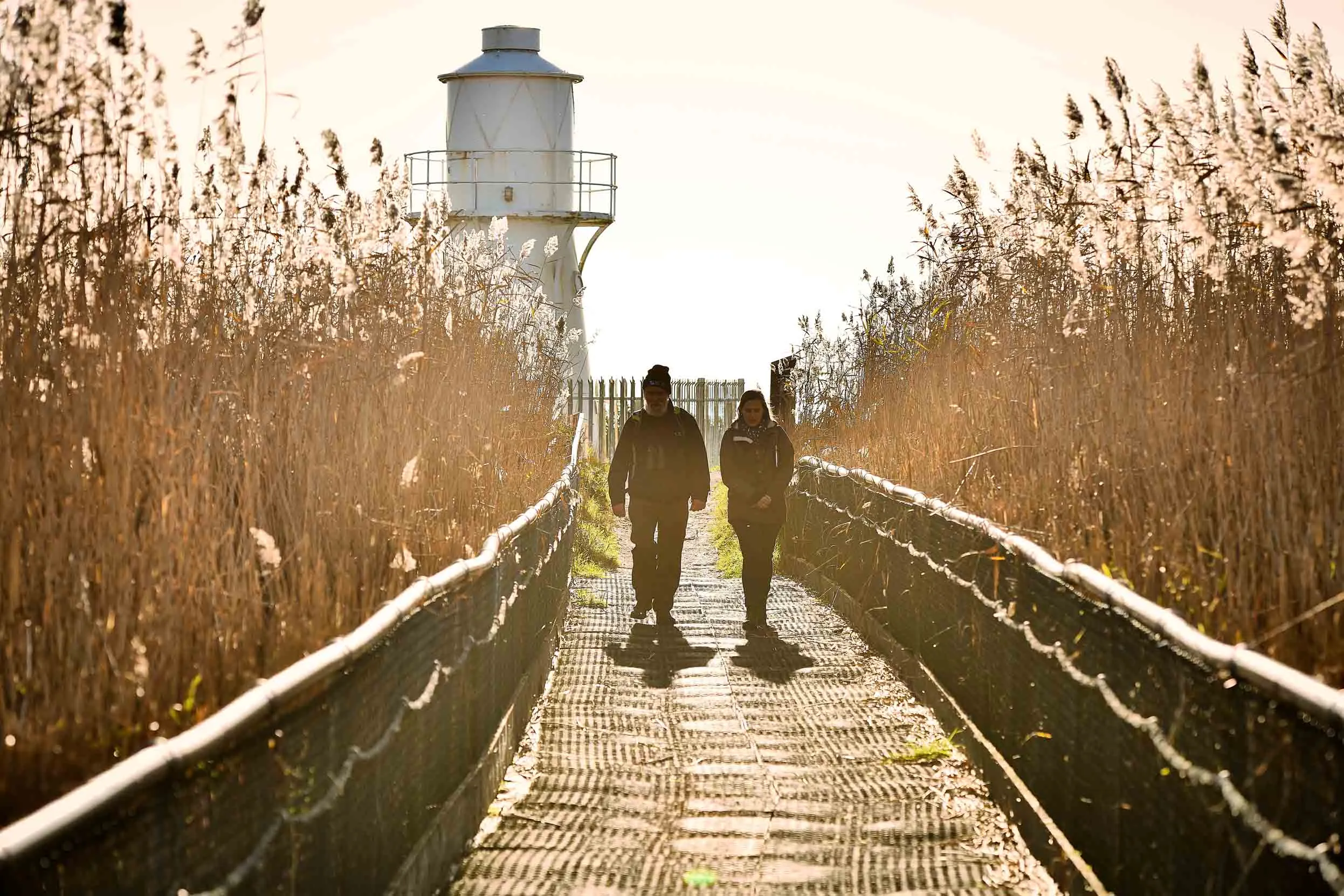
You're sure to find something of interest in February on all our nature reserves. However, these are just a few of our favourites at this time of year:
Loch Leven, Kinross: This nature reserve is a haven for families, nature lovers and wildlife watchers alike. Many migratory geese spend winter here and you can see Red Squirrels all year round.
Lochwinnoch, Renfrewshire: Close to Glasgow, this firm family favourite offers amazing views of wetland wildlife. Flocks of Goldeneye and Goosander spend winter here and if you’re lucky you may spot a swooping Hen Harrier or the electric blue flash of a Kingfisher.

Newport Wetlands: This reserve near the Severn Estuary offers winter walks around wetlands and reedbeds. In winter, it’s a great spot to see wildfowl such as Shoveler and Shelduck and at dusk up to 50,000 Starlings often give a spectacular display as they come in to roost in the reedbeds. For the best chance of seeing it, get there an hour before dusk.
Conwy: A terrific place for a family nature adventure on the North Wales coast. Starlings are again one of the highlights, come around an hour before dusk for the best chance to see their famous murmurations. But you can also spot Siskins and Lesser Redpolls in the alder trees and Goldeneye ducks joining the local wildfowl all the way from Russia.
Pagham Harbour: Head to this Sussex nature reserve in winter to look for a wealth of wintering wetland birds including Lapwings, Golden Plovers, Slavonian Grebes and Red-breasted Mergansers. Visit at dusk and you may be lucky enough to catch a winter spectacular as hundreds of Dark-bellied Brent Geese and Wigeon pass overhead as they head to nearby fields.
Minsmere: This coastal nature reserve on the Suffolk coast is a great place to visit at any time of the year, but in February look out for great flocks of ducks, as well as other wintering water birds.

Belfast’s Window on Wildlife: A February visit to this accessible site will introduce you to the wild birds of Belfast’s tidal lagoons. Look for tiny Teals and wonderful Wigeon among the flocks which turn up to feed – and then pick yourself up with some refreshments in the café.